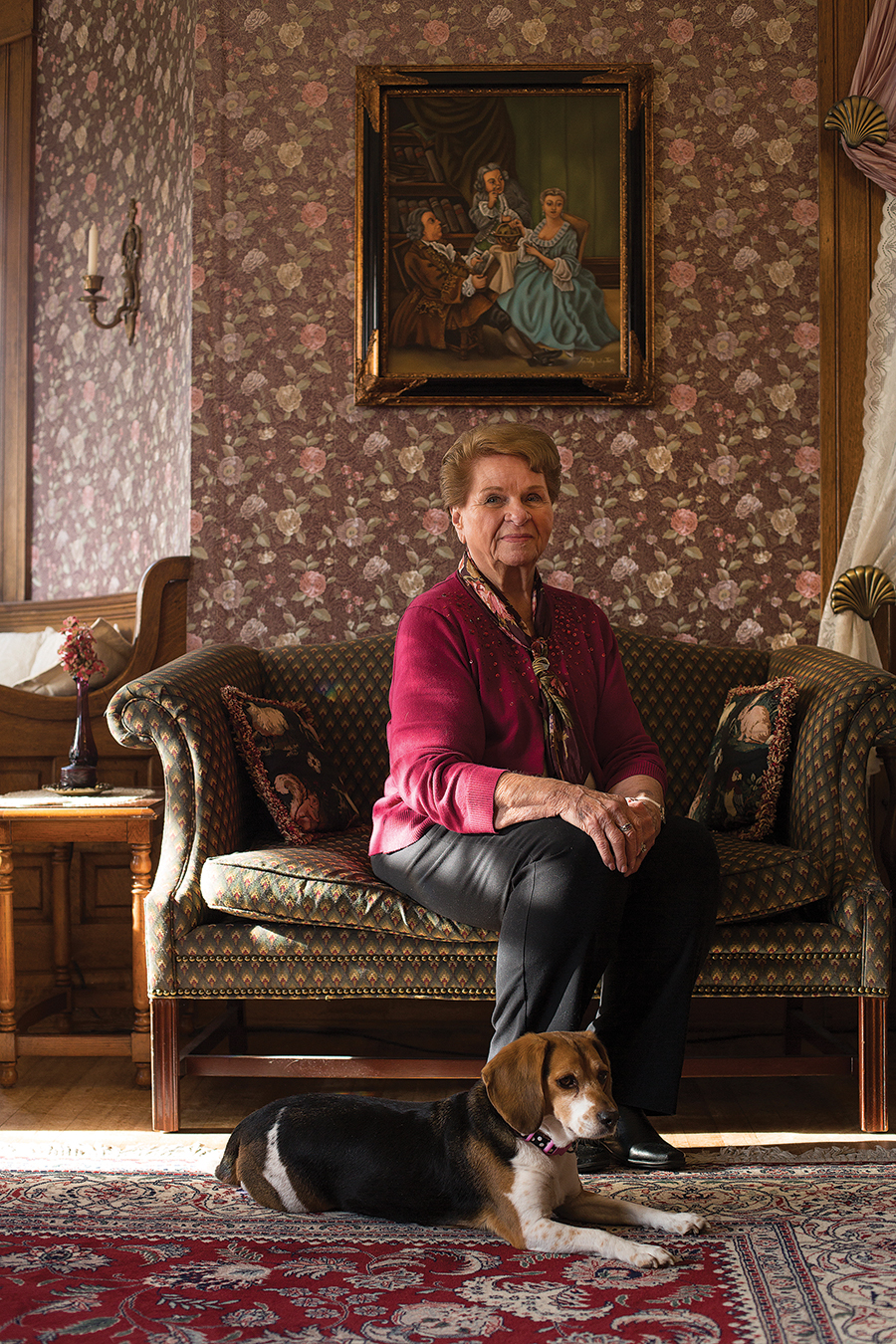
Standing in the tea room with her hands cupped at ease in front of her, Donna Grow recites the history of the Hoquiam Castle as she has done many times during the 11 years she has lived here.
She tells the tale of Robert Lytle, who first made his money in the grocery business. When he had the opportunity to purchase a lumber mill, he put in the first electric saw “and that is where he made his fortune,” she explains.
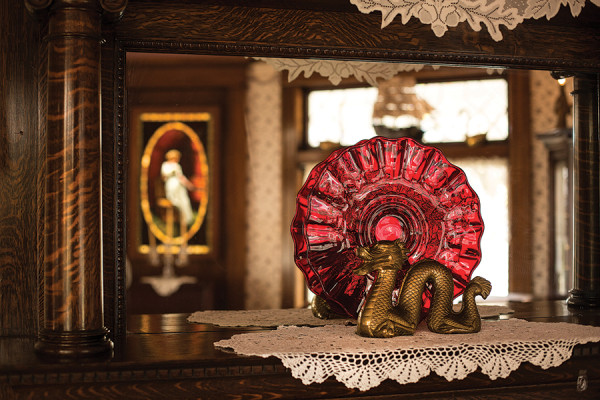
(Gabe Green | The Daily World)
Hoquiam Castle
It’s called “the Castle” because Lytle built a mansion that was just a little bit bigger and better than his brother’s next door. That one is simply called “Lytle House.” Robert Lytle began building the 10,000-square-foot “castle” in 1897. Three years later, the five-bedroom house was finished. After moving to Portland, Lytle sold the house to his niece Theadosia after she married. When she died in the late 1950s, everything was sold and put on the market for $14,000. The house remained vacant until 1968, when it was purchased by Bob Watson who restored much of the house and furnished it with many of the antiques seen there today. “He really saved it. One way or another he ought to get a pat on the back for what he did,” Grow says.
Grow genuinely loves her home, and you can see the pleasure in her face as she speaks of what she loves most about it. “I enjoy having people in it all the time. I enjoy having these tours. I am really a people person.”
She offers tours for a donation, which she gives to her church, Hoquiam Baptist. “I don’t want to run a business,” says the octogenarian.
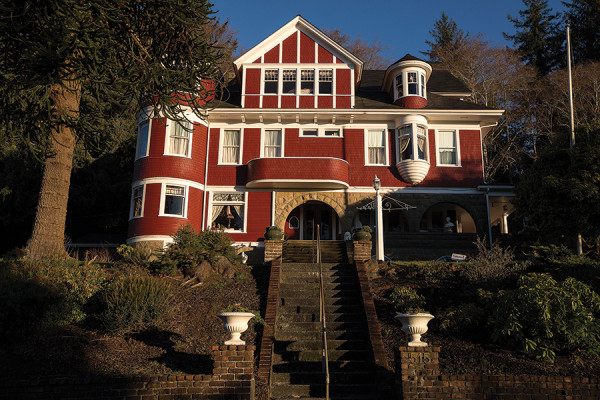
(Gabe Green | The Daily World)
Hoquiam Castle
Eleven years ago — a year after her husband passed away — Grow purchased the home and ran a bed and breakfast with her two daughters, but now she lives with Peaches and her eldest grandson and caretaker, Chris Adamson. She also shares her home for Bible study and prayer meetings four days each week and for tours by appointment.
“Sharing our home is what we do,” she says and Adamson agrees with her.
“It’s what we do,” he echoes.
Lumbering down the stairs in overalls is Keith Knox. Grow invited him and his wife, Louise, to her house after their house was damaged in recent flooding. Today, he is getting ready to move furniture from his house into a storage unit. He prepares a sandwich in the kitchen and makes himself at home at the dining table while we continue our tour.
The table, flanked with eight of the 13 carved griffin chairs, is beneath a chandelier that the Watson family found in a barn. It was from a building that had been torn down in Montesano. There are antique hutches in the room, a huge mirror with an ornate frame that tilts toward the table and a knight standing guard.
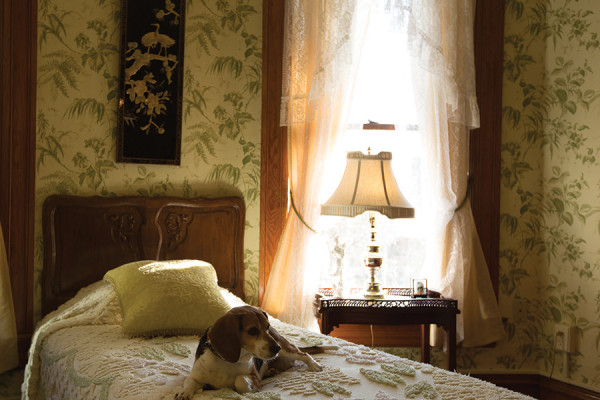 Though filled with antiquities — Grow purchased the house furnished — there are bits and pieces that she and her family have added.
Though filled with antiquities — Grow purchased the house furnished — there are bits and pieces that she and her family have added.
The suit of armor was a Christmas gift from her children — she has 14 of them, as well as 47 grandchildren, great-grandchildren, two of them great-great-grandchildren.
As he leaves, to attend his task of the day, Keith gestures to Donna in gratitude, “This is the closest thing to a saint that we have in this world.”
In the downstairs bathroom, you will find a maid’s clawfoot bathtub that is only three feet long. When the sink had to be replaced, Grow chose a modern, above-the-counter bowl that is reminiscent of the Art Deco period yet pulls in the feeling of a hand basin, pre-plumbing. When built, the house had all the modern ammenities, the first on the Harbor to have electricity, with plumbing and a furnace.
Meandering up the stairs to the second floor, we venture past two of the original stained-glass windows, which now are bowed from more than 100 years of gravity’s toll. Outside, alcove lights illuminate the glass at night.
At the top of the stairs is the third fireplace, as well as the Princess, Queen and King rooms. Off of the Princess room is the family bathroom. In the corner sits the ornate porcelain commode, an original to the house and period, made by none other than Thomas Crapper.
In the Princess room the decor becomes apparent. Though little talked about in design circles, it’s a perfect example of the Aesthetic Movement — a blend of Victorian and Arts & Crafts, with a Far Eastern influence and prominent use of nature, plants and animals. The Castle is a museum.
Continuing to the third floor, we come to the grand ballroom. A rosewood piano sits on an elevated stage at the far end of the hall in front of large windows overlooking the city and harbor.
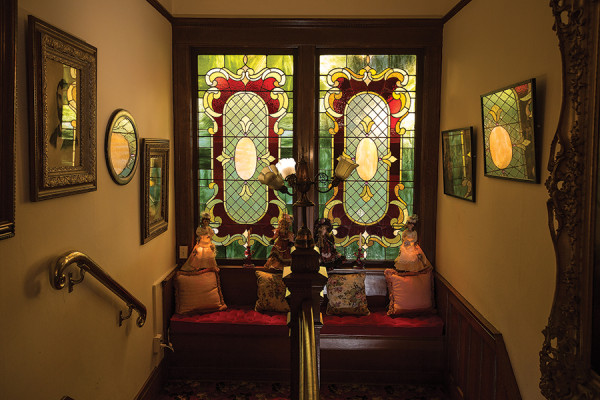
(Gabe Green | The Daily World)
Hoquiam Castle
Off to the east is another room with a full bar, minus a sink. “It was the first house to have electricity, but there is no running water in the bar,” says Grow, puzzled. The bar was originally installed in Portland, making a journey around Cape Horn to get there. When the Watsons brought it to Hoquiam, the 20-foot bar was hoisted — in one piece — up the side of the building and was brought in through the third-floor windows.
Back through the ballroom, you can venture outside to the turret overlooking the younger brother’s mansion. It is for sale, if you’d like to live in the neighborhood, and are in the market for a mansion, but not quite a castle.